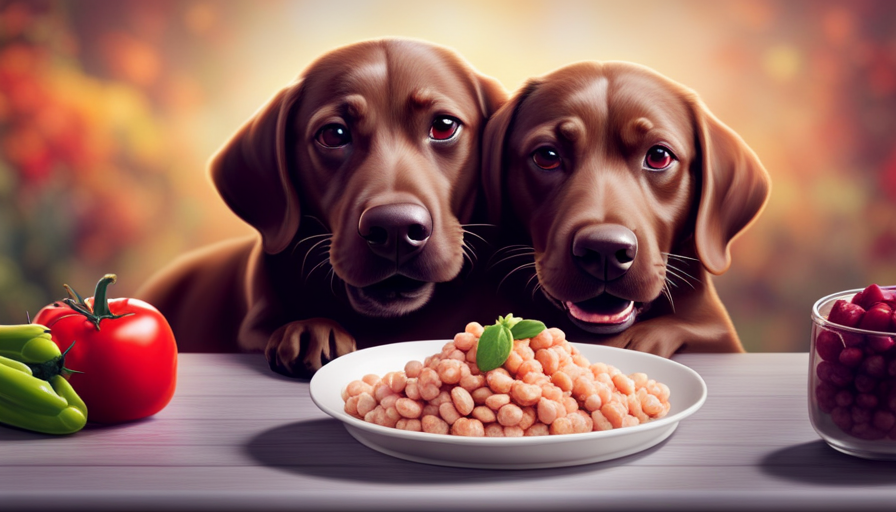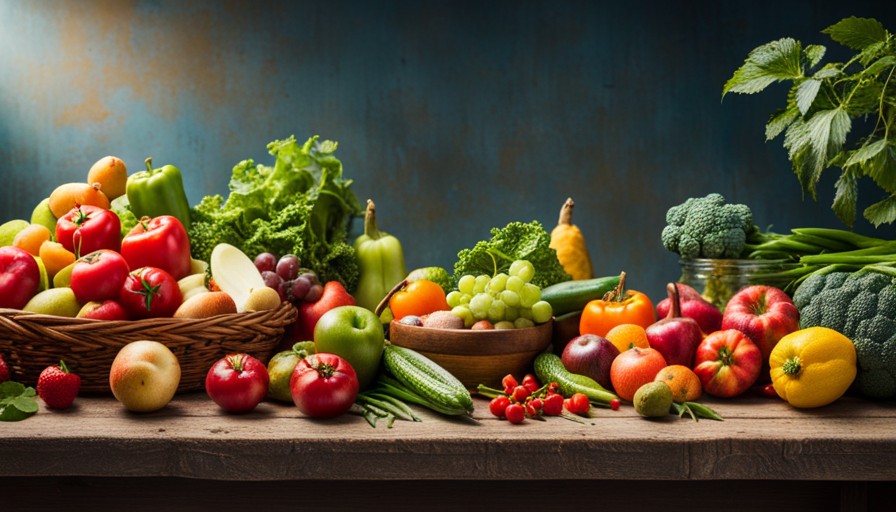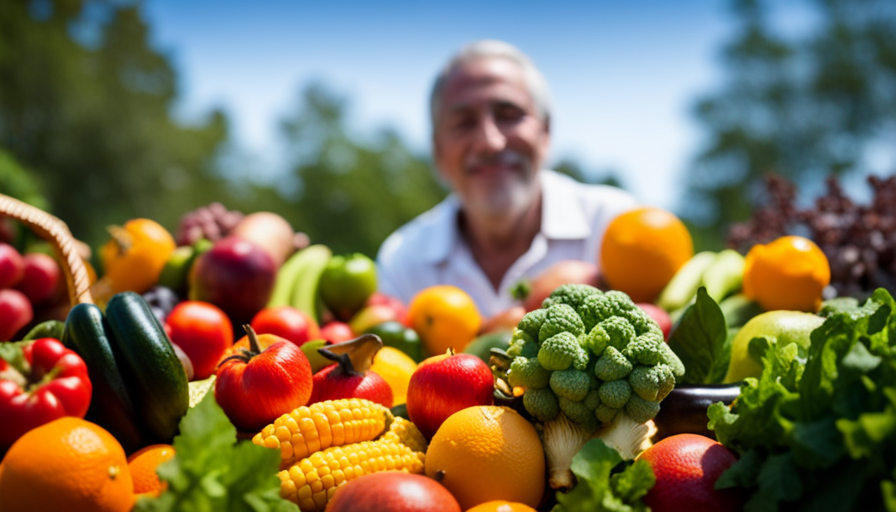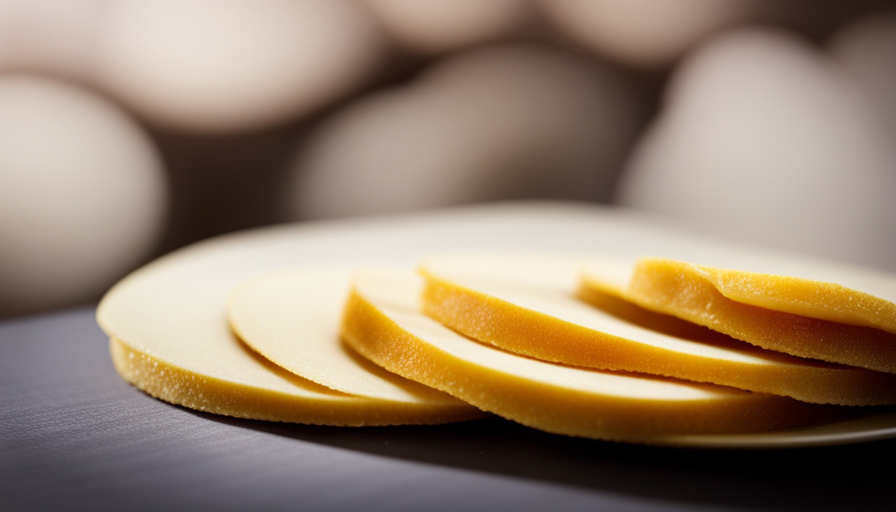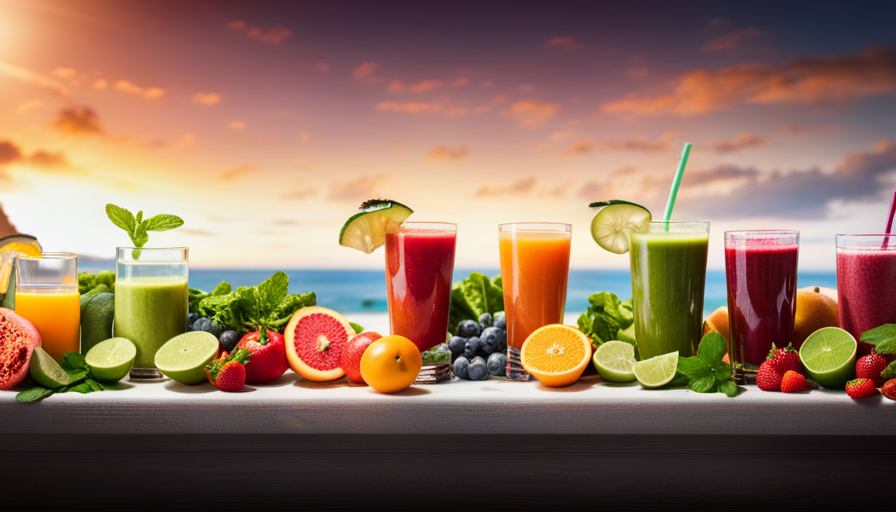As a specialist in pet nutrition, my goal is to provide the highest quality for our beloved furry companions. That’s why I’m here to introduce you to the amazing advantages of transitioning to a raw food diet for your pet. And when it comes to raw food options, Stella and Chewy’s is a trusted name you can rely on.
Switching to a raw food diet can have a profound impact on your pet’s overall health and wellbeing. From improved digestion and stronger immune system to shinier coat and increased energy, the benefits are truly remarkable. But making the transition can be a bit daunting, which is why I’m here to guide you through the process.
In this article, I will provide you with detailed instructions on how to switch to Stella and Chewy’s raw food, ensuring a smooth and successful transition. We’ll cover everything from consulting with your veterinarian to handling and storing raw food safely. I’ll also address any concerns you may have and troubleshoot common issues that may arise during the transition.
So let’s embark on this journey together and give your pet the nutrition they deserve. Get ready to see them thrive on Stella and Chewy’s raw food diet!
Key Takeaways
- Stella and Chewy’s is a trusted brand for raw food and offers a range of wholesome and nutrition-packed options.
- Proper handling and storing of raw food, including washing hands and utensils, thawing in the refrigerator, and preventing cross-contamination, is important to maintain nutritional integrity and prevent bacterial growth.
- Transitioning to raw food should be done gradually, with a suggested timeline and introduction of new proteins to prevent adverse reactions.
- Consulting with a veterinarian or pet nutrition specialist is recommended for personalized guidance based on a pet’s specific needs and health conditions.
Benefits of Switching to Raw Food for Your Pet
Are you tired of your pet’s dull coat and lack of energy? Switch to raw food and watch them thrive! As a pet nutrition specialist, I can assure you that feeding your pet a raw food diet has numerous benefits.
Raw food is packed with essential nutrients and enzymes that are often lost during the cooking process. This means that your pet will be getting the maximum nutritional value from their food, leading to improved overall health and vitality.
One of the main benefits of raw food is its impact on your pet’s coat. Raw food contains healthy fats and oils that promote a shiny and lustrous coat. You’ll notice a significant improvement in the texture and appearance of your pet’s fur.
Additionally, raw food can boost your pet’s energy levels. The natural ingredients in raw food provide a readily available source of energy, allowing your pet to be more active and playful.
Switching to raw food is also beneficial for your pet’s digestive system. Raw food is easily digestible, which means that your pet’s body can absorb and utilize the nutrients more efficiently. This can help alleviate common digestive issues such as gas, bloating, and diarrhea.
The benefits of switching to raw food for your pet are undeniable. Not only will their coat become shinier and their energy levels soar, but their overall health and digestion will also improve.
Now that you understand the benefits of raw food, let’s delve into understanding Stella and Chewy’s raw food products.
Understanding Stella and Chewy’s Raw Food Products
Discover the incredible range of wholesome and nutrition-packed options that await you with Stella and Chewy’s! When it comes to understanding raw food products, it’s important to consider the benefits and proper handling techniques. Here are three key points to keep in mind:
-
Understanding raw feeding benefits: Raw food diets offer numerous benefits for pets. They provide a biologically appropriate and natural diet that mimics what animals would eat in the wild. This can lead to improved digestion, increased energy levels, healthier skin and coat, and even better dental health. Additionally, raw food diets can help with weight management and reduce the risk of certain health conditions.
-
Proper raw food handling: It’s crucial to handle raw food safely to prevent any potential risks. Always wash your hands and clean all utensils and surfaces that come into contact with the raw food. Thaw frozen raw food in the refrigerator and avoid leaving it out at room temperature for too long. Remember to separate raw food from other food items to prevent cross-contamination.
-
Consult with your veterinarian: As with any dietary change, it’s essential to consult with your veterinarian before switching your pet to a raw food diet. They can provide personalized guidance based on your pet’s specific needs and health conditions. Your veterinarian will also be able to address any concerns or questions you may have about transitioning to raw food.
By understanding the benefits of raw feeding and following proper handling techniques, you can ensure a smooth and successful transition for your pet’s diet. Consult with your veterinarian for further guidance on making the switch to raw food.
Consult with Your Veterinarian
Make sure to consult your veterinarian before making any changes to your pet’s diet to ensure their health and well-being. As a pet nutrition specialist, I’ve got a deep understanding of the nutritional needs of pets and the science behind it.
Raw food diets have gained popularity among pet owners due to their numerous benefits. They provide a balanced and natural diet that mimics what pets would eat in the wild. Raw food diets can improve digestion, increase energy levels, promote healthier skin and coat, and even reduce the risk of certain health issues such as allergies or obesity.
When considering a raw food diet for your pet, it’s important to follow certain recommendations. Start by choosing a reputable brand like Stella and Chewy’s, which offers a range of raw food products specifically formulated for pets. These products are carefully prepared to provide the necessary nutrients in a safe and convenient way. Additionally, it’s important to consider your pet’s individual needs, such as their age, size, and any specific health concerns. Your veterinarian can help you determine the right portion sizes and guide you through the transition process.
Consulting with your veterinarian is crucial when considering a switch to raw food for your pet. They can provide accurate and up-to-date information on the benefits and potential risks, as well as offer individualized recommendations based on your pet’s needs. By working together, you can ensure a successful and gradual transition to a raw food diet for your furry friend.
Gradual Transitioning Process
When considering transitioning your pet to a raw diet, it’s important to take it slow and gradually introduce new foods into their meals. A gradual transition allows their digestive system to adapt to the new diet and helps minimize any potential digestive upset. Here is a suggested transitioning timeline:
| Week | Protein Source | Ratio |
|---|---|---|
| Week 1 | Chicken | 100% kibble |
| Week 2 | Chicken | 75% kibble, 25% raw |
| Week 3 | Chicken | 50% kibble, 50% raw |
| Week 4 | Chicken | 25% kibble, 75% raw |
| Week 5 | Chicken | 100% raw |
It’s important to note that this timeline is a general guideline and may vary depending on your pet’s individual needs and tolerance. As you progress through the weeks, you can start introducing new proteins such as beef, turkey, or fish, following a similar gradual process.
Introducing new proteins gradually allows your pet’s system to adjust to different protein sources and helps prevent any adverse reactions. Keep in mind that each pet is unique, and it’s essential to monitor their response to ensure a smooth transition.
Next, we will discuss the importance of handling and storing raw food safely to maintain its nutritional integrity and prevent any potential risks.
Handling and Storing Raw Food Safely
Ensure you handle and store your pet’s new diet properly to maintain its nutritional quality and keep them safe. When transitioning to a raw food diet for your pet, it’s crucial to follow safe handling practices and proper storage techniques. Here are some important guidelines to consider:
- Keep raw food separate from human food to avoid cross-contamination.
- Thoroughly wash your hands and any utensils or surfaces that come into contact with raw food.
- Store raw food in the refrigerator or freezer to prevent bacterial growth.
- Use airtight containers or freezer bags to maintain freshness and prevent odors.
- Thaw frozen raw food in the refrigerator or under cold running water to avoid temperature abuse.
Raw food diets offer numerous benefits for pets, such as improved digestion and healthier skin and coat. However, it’s important to be aware of potential risks associated with raw food, such as bacterial contamination. By handling and storing raw food safely, you can minimize these risks and ensure your pet receives the full nutritional benefits of their new diet.
Transitioning to raw food is just the first step in providing a well-rounded diet for your pet. In the next section, we’ll discuss how to appropriately supplement your pet’s diet to meet their individual nutritional needs.
Supplementing Your Pet’s Diet
When supplementing your pet’s diet with raw food, it’s important to consider including fruits and vegetables. These nutrient-rich additions provide essential vitamins, minerals, and antioxidants that contribute to your pet’s overall health and well-being.
Additionally, it’s crucial to add essential nutrients to ensure a balanced diet for your pet, such as omega-3 fatty acids, calcium, and probiotics. Consulting with a pet nutrition specialist or veterinary nutritionist can help guide you in making informed decisions regarding your pet’s specific dietary needs.
Including Fruits and Vegetables
To make the transition to raw food easier, you can add a variety of fruits and vegetables to your furry friend’s diet. For example, juicy blueberries are like little bursts of sweetness in their mouth. Including fruits and vegetables in your pet’s raw food diet provides important vitamins, minerals, and antioxidants that contribute to their overall health and well-being.
Here are four reasons why adding fruits and vegetables is beneficial for your pet:
-
Boosts immune system: Fruits and vegetables are packed with antioxidants that help strengthen your pet’s immune system, protecting them from illnesses and diseases.
-
Provides essential nutrients: Fruits and vegetables are rich in vitamins and minerals that are essential for your pet’s growth and development.
-
Promotes healthy digestion: The fiber found in fruits and vegetables aids in proper digestion and can prevent constipation or diarrhea.
-
Adds variety and flavor: Including a variety of fruits and vegetables in your pet’s diet not only adds nutritional value but also keeps mealtime interesting and enjoyable for them.
By incorporating fruits and vegetables into your pet’s raw food diet, you’re providing them with a well-rounded and nutritious meal. Next, we’ll discuss the importance of adding essential nutrients to ensure their diet is balanced and complete.
Adding Essential Nutrients
Incorporating a variety of essential nutrients into your pet’s diet is crucial for their overall health and well-being. As a pet nutrition specialist, I understand the importance of providing a balanced raw food diet that meets all of your furry friend’s nutritional needs.
When it comes to essential nutrient sources, it’s essential to include a variety of proteins like lean meats, organs, and bones. Additionally, adding fruits and vegetables can provide essential vitamins and minerals.
To ensure the best raw food preparation, it’s important to handle and store ingredients properly, following safe food handling practices. It’s also essential to consult with a veterinarian or nutritionist to tailor the diet to your pet’s individual needs.
By incorporating these essential nutrient sources and following proper raw food preparation tips, you can provide your pet with a healthy and nutritionally balanced diet. Moving forward, monitoring your pet’s health and progress is crucial to ensure their well-being.
Monitoring Your Pet’s Health and Progress
Keep an eye on your pet’s health and progress by regularly monitoring their weight, coat condition, and overall energy levels. This will help you ensure that their transition to a raw food diet is going smoothly and that they’re receiving the necessary nutrients.
Here are four key things to consider when monitoring your pet’s health and progress:
-
Weight: Keep track of your pet’s weight throughout the transition process. A gradual and healthy weight loss or gain can indicate that they’re adjusting well to the new diet. If you notice any sudden or significant changes in weight, it’s important to consult with your veterinarian.
-
Coat Condition: A raw food diet can improve your pet’s coat condition, making it shinier and healthier. Monitor any changes in their fur, such as excessive shedding or dryness. If you notice any issues, it could be a sign of an underlying problem or a need for adjustments in their diet.
-
Energy Levels: Pay attention to your pet’s energy levels. A well-balanced raw food diet should provide them with increased vitality and stamina. If you notice a decrease in energy or lethargy, it’s important to address it promptly to ensure their nutritional needs are being met.
-
Dietary Restrictions: If your pet has any specific dietary restrictions or health conditions, it’s crucial to monitor their health closely during the transition to a raw food diet. Consult with your veterinarian to ensure that their dietary needs are being met and to address any potential concerns.
By closely monitoring your pet’s health and progress, you can ensure a successful transition to a raw food diet.
In the next section, we’ll discuss common issues that may arise during this process and how to troubleshoot them effectively.
Troubleshooting Common Issues During the Transition
Experiencing difficulties during the transition to a raw food diet? Let’s troubleshoot common issues together! Switching your pet to a raw food diet can have numerous health benefits, but it’s not always a seamless process.
Some common problems you might encounter include digestive upset, refusal to eat, and difficulty adjusting to new textures. Don’t worry, though – I’m here to help you navigate these challenges.
If your pet experiences digestive upset, it’s important to introduce the new diet gradually. Start by mixing a small amount of raw food with their current diet and gradually increase the proportion over time. This will allow their digestive system to adjust more smoothly. Additionally, make sure to provide plenty of fresh water throughout the transition.
Another common issue is pets refusing to eat the new diet. This can be frustrating, but it’s important not to give up too quickly. Try different proteins and textures to see what your pet prefers. You can also try warming the food slightly or adding a small amount of bone broth for added flavor.
Remember, every pet is unique, so it’s important to monitor their progress and make adjustments as needed. If you’re still experiencing difficulties, consulting with a veterinary nutritionist or a pet nutrition specialist can provide you with tailored advice and guidance.
Now that we’ve addressed some common problems during the transition, let’s move on to maintaining a balanced raw food diet in the long term.
Maintaining a Balanced Raw Food Diet in the Long Term
Once you’ve successfully transitioned your pet to a raw food diet, maintaining a balanced and nutritious long-term plan becomes essential for their overall health and well-being. It’s important to understand the nutritional requirements of your pet to ensure their long-term sustainability on a raw food diet.
To maintain a balanced raw food diet, it’s crucial to provide a variety of proteins, including muscle meat, organ meat, and bone. These three components form the foundation of a raw food diet and should be included in appropriate proportions. Muscle meat provides essential amino acids, organ meat offers vital nutrients like vitamins and minerals, and bones supply calcium and phosphorus.
In addition to proteins, a balanced raw food diet should also include fruits and vegetables. These plant-based foods offer important vitamins, minerals, and antioxidants that support your pet’s overall health.
To help visualize the balance of a raw food diet, consider the following table:
| Protein | Muscle Meat | Organ Meat | Bone |
|---|---|---|---|
| Portion | 50% | 10% | 40% |
| Fruits and Vegetables |
|---|
| 10% |
By following this balanced approach, you can ensure your pet receives the necessary nutrients for long-term sustainability on a raw food diet.
Transitioning to a raw food diet can raise many questions and concerns. In the next section, we will address some FAQs about switching to Stella and Chewy’s raw food to provide you with further guidance and support.
FAQs About Switching to Stella and Chewy’s Raw Food
Curious about Stella and Chewy’s raw food? Wondering how to make the switch? Let’s address some FAQs to provide you with the guidance and support you need.
When it comes to transitioning to Stella and Chewy’s raw food, it’s important to do it gradually to avoid any digestive upset. Start by mixing a small amount of the raw food with your pet’s current diet, gradually increasing the ratio over a period of 7-10 days. This slow transition allows your pet’s digestive system to adjust to the new food.
One common concern pet owners have is whether raw food provides all the necessary nutrients. Stella and Chewy’s raw food is carefully formulated to meet the nutritional needs of your pet. It contains a balanced blend of proteins, fruits, vegetables, and other essential ingredients. However, if you have specific concerns or your pet has unique dietary requirements, it’s always a good idea to consult with a veterinarian or pet nutrition specialist.
Another common question is how to handle raw food safely. It’s important to follow proper food handling practices to minimize the risk of bacterial contamination. Thaw raw food in the refrigerator, clean all surfaces and utensils thoroughly, and wash your hands after handling raw food.
By following these transitioning tips and addressing common concerns, you can ensure a smooth switch to Stella and Chewy’s raw food for your pet. Remember, each pet is unique, so it’s always a good idea to consult with a professional to tailor the transition to your pet’s specific needs.
Frequently Asked Questions
Can I feed my pet Stella and Chewy’s raw food as their exclusive diet?
Yes, you can feed your pet Stella and Chewy’s raw food as their exclusive diet. Feeding raw food versus kibble has several benefits for pets. A raw food diet provides a biologically appropriate and nutrient-rich option that closely resembles what animals would eat in the wild. It can improve digestion, strengthen the immune system, promote healthy skin and coat, and support overall well-being. However, it’s important to consult with a veterinarian or pet nutrition specialist to ensure your pet’s specific nutritional needs are being met.
How long does it take for pets to adjust to a raw food diet?
When transitioning pets to a raw food diet, it’s important to do so gradually over a period of 7-10 days. Start by mixing a small amount of raw food with their current diet and gradually increase the proportion of raw food each day. This allows their digestive system to adjust to the new diet.
Benefits of feeding raw food include improved digestion, healthier skin and coat, and increased energy levels.
Always consult with a pet nutrition specialist or veterinary nutritionist to ensure a balanced and safe transition for your pet.
Can I mix Stella and Chewy’s raw food with my pet’s current diet?
Yes, you can mix Stella and Chewy’s raw food with your pet’s current diet as part of the transitioning process to a raw diet. Mixing small amounts of raw food with your pet’s current food gradually allows their digestive system to adjust. This method helps prevent any sudden changes that could lead to stomach upset. Over time, you can increase the proportion of raw food while decreasing the amount of their old diet until they’re fully transitioned to a raw food diet.
Are there any potential health risks associated with feeding raw food to my pet?
There are potential health risks associated with feeding raw food to pets, but there are also numerous benefits. Raw food can provide a more natural and nutrient-dense diet for pets, promoting better digestion, healthier skin and coat, and improved overall health.
However, raw food carries the risk of bacterial contamination, such as salmonella or E. coli. It’s important to handle and prepare raw food properly to minimize these risks. Consult with a veterinarian or pet nutrition specialist for personalized advice and guidance.
Can I feed Stella and Chewy’s raw food to pets of all ages and sizes?
Feeding guidelines for raw food diets can vary depending on the age and size of your pet. It’s important to consult with a veterinary nutritionist or pet nutrition specialist to determine the appropriate portion sizes and feeding frequency.
Raw food diets offer numerous nutritional benefits, such as improved digestion, a healthier coat, and increased energy levels. However, it’s crucial to ensure a balanced diet by including a variety of proteins, organs, and bones to meet your pet’s specific nutritional needs.
What are the benefits of switching to Stella and Chewy’s raw food for my pet?
Switching to Stella and Chewy’s raw food can greatly benefit your pet’s health. This premium pet food is made with high-quality ingredients and packed with nutrients, providing a natural and balanced diet. Your pet will enjoy improved digestion, healthier coat, and overall increased vitality with Stella and Chewy’s raw food.
Conclusion
In conclusion, making the switch to Stella and Chewy’s raw food is a transformative experience for both you and your pet. The benefits are truly remarkable, from improved digestion and energy levels to a shinier coat and fresher breath.
By following the gradual transitioning process and consulting with your veterinarian, you can ensure a smooth and successful transition. Remember to handle and store the raw food safely, monitor your pet’s health and progress, and address any issues that may arise.
With the guidance of a knowledgeable pet nutrition specialist, you can maintain a balanced raw food diet for your furry friend’s long-term health and happiness. Make the leap to raw food and witness the incredible transformation in your pet’s well-being!

